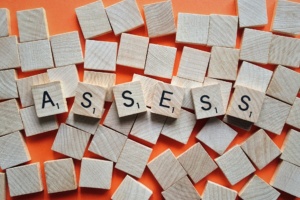“I have an idea I’d like to share with you. I’ve been thinking of ways to grow my company because it is more valuable than one that’s not growing. Well, I am considering two options. Option 1 offers a new service to my existing clients, or option 2, which is expanding into new locations. I’m leaning towards option 2 – a new location. What do you think? Think that’s a good idea?”
As I tell all my clients who ask me this question, the idea might be just fine, but you need to decide if it is feasible – for you at this time.
These are the core elements of any feasibility study:
- What does success look like?
- Can you validate that there is a market for it?
- Does this solve a real need?
- Can you resource it?
- Is the payoff worth it?
- Can you be competitive in this space?
In our experience, the initial ideas, although good, have not been “worked enough” to be great ideas worthy of you investing your precious resources to launch them. A feasibility assessment is not a full-fledged business plan but contains some of the core elements of the business case. It’s at the core of all great business plans.
What is a feasibility study?
A feasibility assessment is an initial assessment of the practicality of a proposed project or plan. It asks, “Do we have the people, tools, technology, and resources to launch the project successfully?” Success may be measured in financial terms, social terms, reputation or sustainability targets. Doing this initial assessment also makes project sponsors aware of the risks associated with the project preventing them from walking blindly into risky business.

When to Use a Feasibility Study?
There are many applications for a feasibility assessment. It can be used to assess the practicality of an improvement initiative or the business case behind a new idea or project. A beta test or a prototype needs to be created as part of a feasibility assessment in some cases. Feasibility assessments are especially critical if launching the idea or project will require resources (time, team, or money). Think about the role of oddsmakers in the gambling world – an informed gambler knows the odds going into the transaction and can decide whether to make the wager or not. In business, the feasibility assessment is how entrepreneurs and leaders can assess the odds before laying down the investment.
Inventors and visionaries are idea people (ideation), often seeing the impact their solutions bring to the world (Evaluators). Implementing the ideas requires a different set of thinking skills: investigative (analytical minds) and implementing (get it done folks). It is rare to find all in one person, so building your advisor team to supplement your innate skills is advisable.

Elements of a Feasibility Study
Success
“Does this feel right to me and fit my core values?”
Before launching into a business project, the business case needs to articulate what success looks like clearly.
Success may be a minimum financial return on the investment. Still, in 2021, success is more often described not only in financial terms but also in terms of corporate stewardship of non-financial returns.
Examples include:
- How a company treats its employees
- Initiatives to curb waste and contribute to sustainability initiatives
- Social procurement targets to buy local or support companies owned by groups such as visible minorities, women or Indigenous individuals is also a way to define success.
How you define success is a direct reflection of your company’s values and culture.
Defining the Customer
“Can I get in front of my target audience and reach them with a targeted ad?”
Much has been written about the need to focus on one specific target market.
Entrepreneurs are often quick to discredit this advice because their product/service has a wide group of potential customers – even “anybody.” Deciding to be a generalist can be a recipe for disaster because most new ventures do not have the capital required to invest in marketing to multiple target markets.
Nail it! Then Scale It!
The Idea
“Does this idea solve a real need or problem? Is it a pain reliever?”
The most feasible ideas solve a real need or problem. They are real pain relievers. Although people can be motivated towards a reward, most buying happens to relieve pain – the more significant the pain, the easier it is to trigger a buying decision.
- How many people have this pain?
- Is the potential market large enough to be financially feasible?
- Can I target the pain relief to a larger buying group?
Competitive Edge
“Do I have a competitive edge that can’t easily be copied?”
Basic economics teaches us about perfect competition – a situation where demand and supply have been established to eliminate any excess profits in the marketplace. Where there is perfect competition, no one company can earn excess profits.
Choosing to compete with a differentiation that takes you from the “red chum” to the “blue ocean” makes the project more profitable from day one and positions your venture outside of price competition.
As introduced to us by Michael Porter’s 5 Forces Analysis, the higher the barriers to entry, the longer you can protect a market position where you can earn higher profits.

If the answer to any of these 4 questions is No, it’s a full stop. Go back and rework the idea until you can say Yes to all of them.
Other sections of the feasibility assessment include resources, opportunity cost, risk and investment.
Make sure the projects meet your definition of success before jumping in with both feet.
Good design successfully manages the tensions between user needs, technology feasibility, and business viability. – Tim Brown
Speak to an advisor to get started on your next feasibility study.
If you would like to receive tooltips and articles such as this one to your inbox once a month, click here to sign up for our newsletter.

Comments are closed